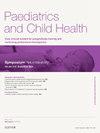神经皮肤综合征:多学科团队方法
Q3 Medicine
引用次数: 0
摘要
神经皮肤综合征是一种罕见的遗传病,表现出典型的皮肤病学和神经学特征,最常见的是1型神经纤维瘤病、结节性硬化症和斯特格·韦伯综合征。这些情况在医学上很复杂,通常涉及许多身体系统,但也往往与发育差异有关。医疗和发展护理往往涉及大量的专业人员。保持护理的整体概述和确保团队之间的明确沟通是确保以适当和及时的方式满足儿童或青少年需求的必要条件。在这篇文章中,我们提出了一种方法,以儿童和年轻人的多学科护理与神经皮肤病,同时考虑到医疗和发展的需要。本文章由计算机程序翻译,如有差异,请以英文原文为准。
Neurocutaneous syndromes: a multidisciplinary team approach
Neurocutaneous syndromes are rare, genetically derived conditions which show characteristic dermatological and neurological features, the most common being Neurofibromatosis type 1, Tuberous Sclerosis Complex and Sturge Weber syndrome. These conditions are medically complex, often involving a number of bodily systems, but are also often associated with developmental differences. Medical and developmental care often involves a large number of professionals. Maintaining a holistic overview of care and ensuring clear communication between teams are essential to ensure that the needs of the child or young person are met in an appropriate and timely way. In this article, we present an approach to the multidisciplinary care of a child and young person with a neurocutaneous condition, taking into account both medical and developmental needs.
求助全文
通过发布文献求助,成功后即可免费获取论文全文。
去求助
来源期刊

Paediatrics and Child Health (United Kingdom)
Medicine-Pediatrics, Perinatology and Child Health
CiteScore
1.20
自引率
0.00%
发文量
70
 求助内容:
求助内容: 应助结果提醒方式:
应助结果提醒方式:


